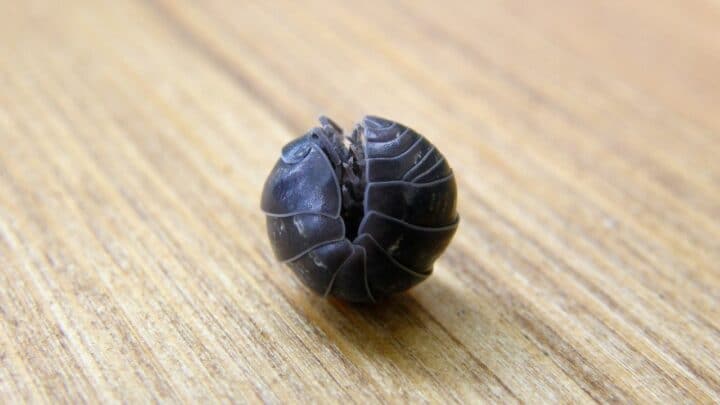Isopods are tiny, armored crustaceans well-loved by vivarium owners the world over for their impeccable clean-up abilities. There are even 10 best isopods for a vivarium that you can read about on this site.
These days, it’s not unusual to find hobbyists breeding isopods in culture tanks, which are later transferred into varied tanks to act as minuscule clean-up crews.
In this regard, if you’re a breeder or prospective breeder, you may have questions about how exactly to determine an isopod’s gender. Read on to find out more.
Sexing Isopods
An isopod’s sex can be determined by looking out for its appendages. Female isopods have leaf-like growths on their undercarriages between their 1st and 5th legs known as brooding pouches. Male isopods have a longer leg pair on the last section of their abdomens called uropods.
Handling Isopods for Sexing
Given their tiny stature and penchant for rolling up in a ball, it takes extreme care to safely handle and sex an isopod.
The best way to go about this is to place them in a transparent vessel through which you can see their undercarriages. Use a bright light to assist you.
Alternatively, depending on size, you can lightly hold one between your fingertips and inspect it with a magnifying glass.
If you don’t see a distinct brooding pouch or uropods, and you notice no distinguishable difference in appearance between the sexes, you can also take a close look at the formation of their abdomens.
The segment plates of female isopods are rectangular in shape, while the males’ are more arched.
How Reliable Isopod Sexing is
Unfortunately, there is no truly reliable way to sex isopods in hobby tanks. This is because they can only be accurately sexed once they have reached sexual maturity.
In the meantime, they can start reproducing when they are just half-grown. Reading about how isopods reproduce can help shed light on this matter.
While they are still maturing, male isopods will maintain a female appearance, and their uropods will only lengthen fully when they reach adulthood.
Other Ways to Sex Isopods
While male and female isopods have different anatomical make-ups, it isn’t always easy to see or distinguish them. Therefore, there are a few other indicators of sex that you can look out for.
For example, some isopods (like the Spanish Porcellio) species have males looking different than females, hence the term sexually dimorphic. This may imply that males are bigger, their coloring is different, or they are simply more ornate.
With many species, males are also thinner and longer while females are wider in girth and slightly squatter. This is to account for the females’ brooding pouches, which they use to safe keep their young.
The most reliable but most unintentionally harmful way to sex an isopod is to look for a male’s sexual appendage, known as a penile pappilae.
It is a small, hard external organ located behind their last pair of legs but is not easy to spot without bending back the isopod’s segments, which can end up hurting or killing them.
How to Know if I Have Both Sexes in My Culture Tank
If you’re buying isopods from a breeder with the intention of starting a culture tank, ask the breeder to ensure you are receiving both sexes.
If they’re not able to guarantee this, make sure you buy these little bugs in a sufficient quantity, roughly ten to twenty specimens, to raise your odds of successfully breeding them.
With that being said, most starter tanks will have sufficient numbers of both sexes to reproduce. These tiny tank janitors breed profusely, making your likelihood of having both sexes present exceptionally high.
For more specialized breeds, though, consult your supplier and ask them for specific quantities of each.
How Do Isopods Mate
If your endeavors to physically identify male isopods are not working out, you can always just keep an eye out during the mating season to see which sex is which.
Once isopods are ready to reproduce, you’ll notice a lot of movement occurring in your tank.
Males follow females around and climb on their backs, where they will often stay for hours. During mating, they tap their uropods against females’ lower segments.
During fertilization, eggs develop in female isopods’ brooding pouches, emerging as mini-isopods within 3 to 7 weeks.
Frequently Asked Questions about Sexing Isopods
How long does it take for isopods to become fully grown?
Isopods can reach sexual maturity before they are fully grown, usually around the 12-week mark. They are likely to have molted more than once and will have started to change in appearance, becoming larger and more distinctly colored. However, their mature size may only be reached at 18 to 24 weeks.
How do female isopods give birth?
Female isopods lay eggs into their brooding pouches (also known as marsupium), which are located on their undercarriages between their first and fifth pairs of legs. The eggs develop and hatch in the brooding pouch, and tiny isopods emerge once they can fend for and feed themselves.
How many eggs do isopods carry?
Isopods can carry anywhere from 50 to 200 eggs at a time. This means that as many live young can mature in a brooding pouch and emerge once the reproductive cycle is complete.
Conclusion
Physically, isopods are pretty remarkable. For something so small, they have incredibly sophisticated biological compositions, which help them eat, breed, and keep them safe.
However, while it might be tempting to pick them up and inspect them to figure out your tank ratios, remember that they are still quite fragile, and take immense care doing so.
In fact, it may not even be necessary to sex them at all, depending on the size of your colony. You’re more than likely to find you have an ample supply of both genders.
Read about how to take care of dairy cow isopods next.


